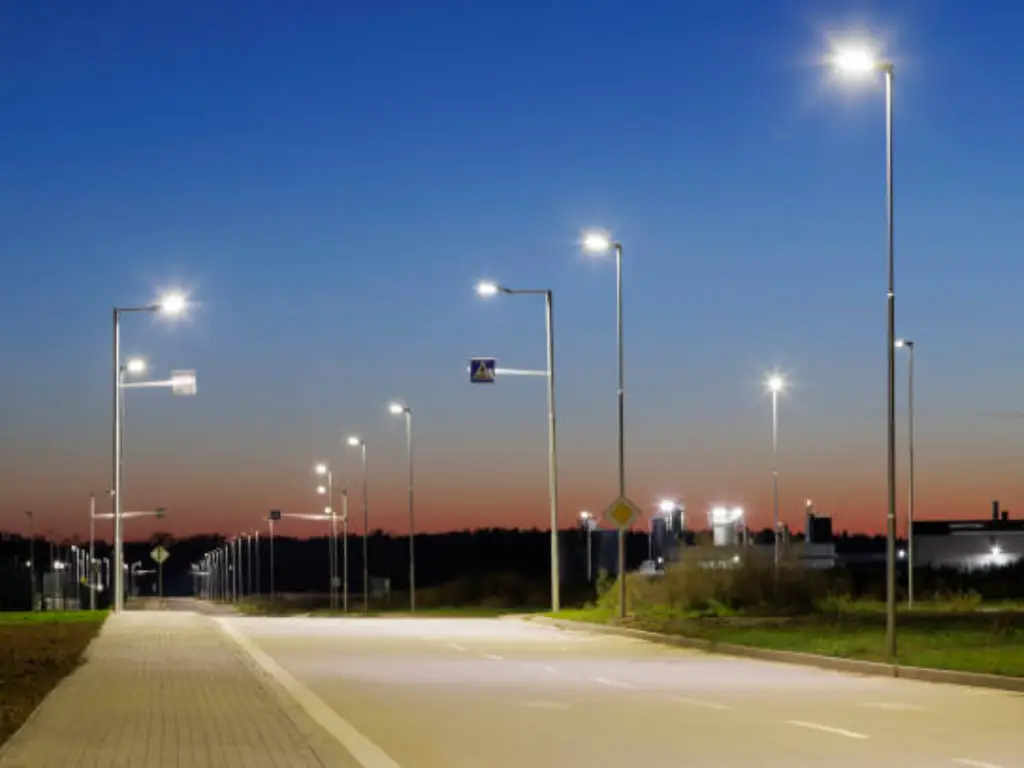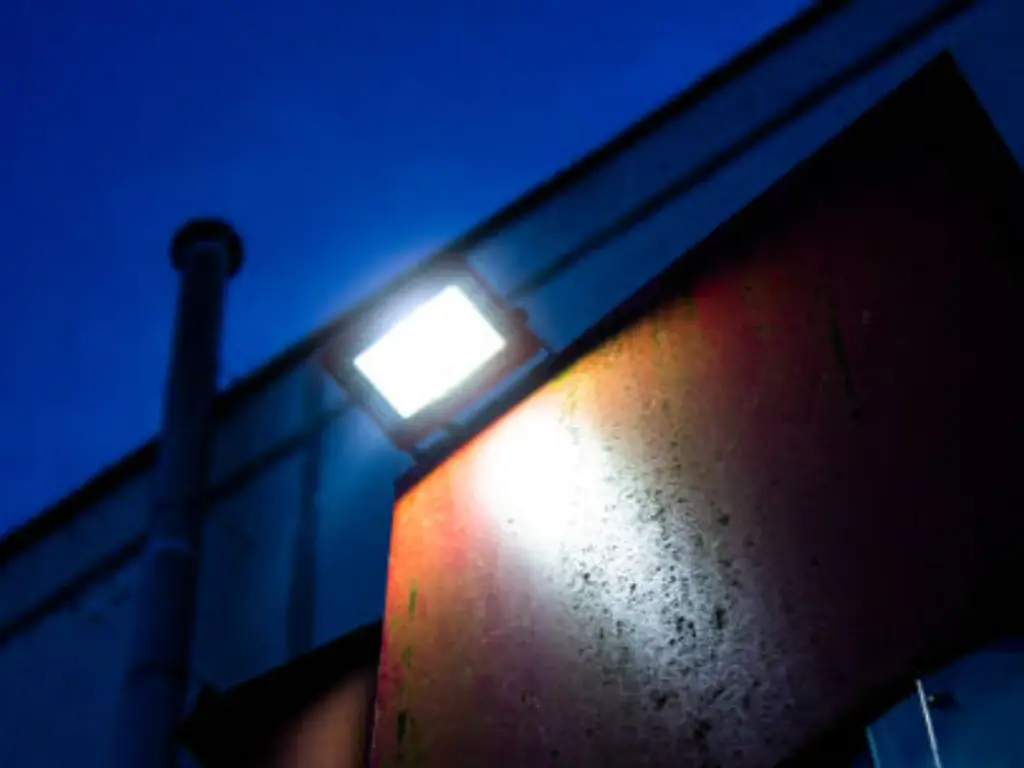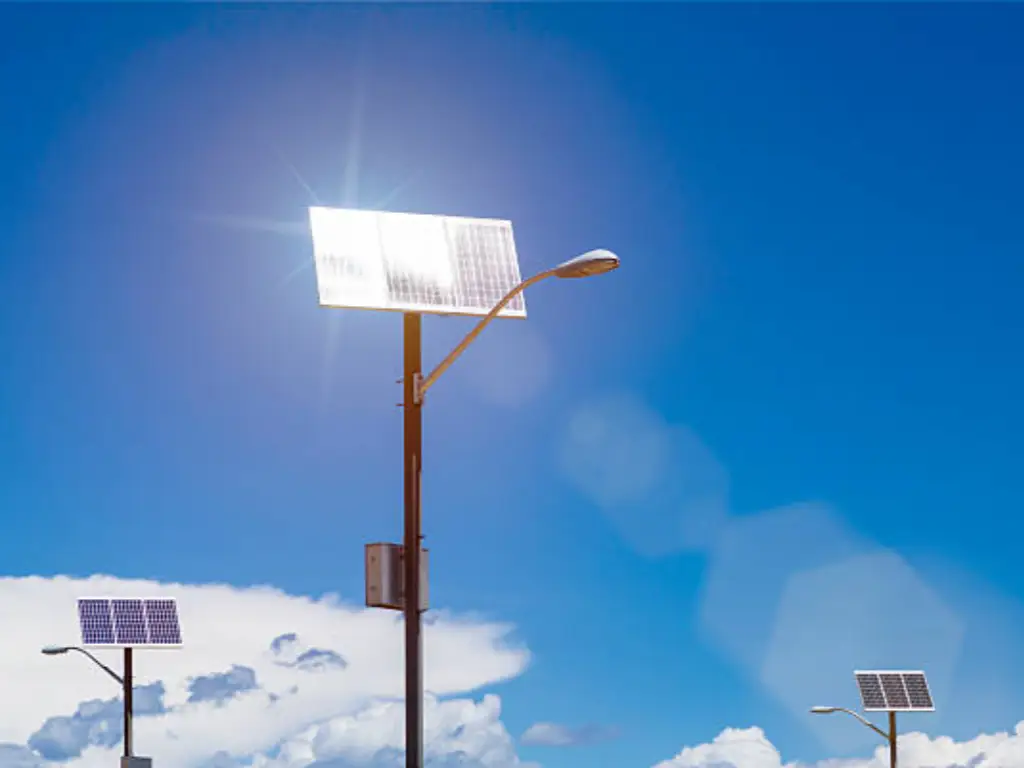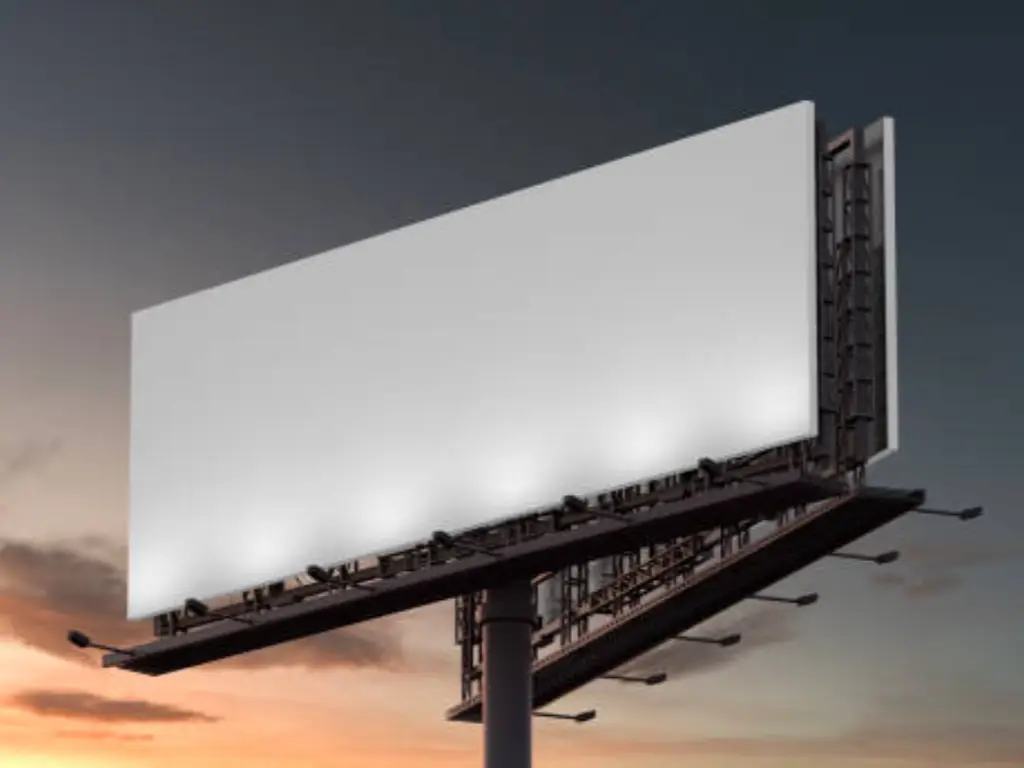Introduction
What defines the success of any project to any developer is not the mere structures that have been constructed, but rather the environment. Street lighting, which is normally regarded as a utility, is actually a pillar of that setting. An effective street light design can serve a higher purpose beyond lighting up the way and paying attention to the safety of people, its ability to enhance visibility and add value to the property, shape the identity of the community, and protect the sustainability. The distribution and location of street lighting fixtures play a key role in realizing these results. Failure to do it might cause unknown expenses, safety risks, and a lack of user experience.
On the other hand, perhaps, a well-prepared and thought-through strategy for street lighting can turn into an asset. It has the potential to convert even a plain development into a safe, warm, and modern neighborhood. This handbook is designed to help developers such as yourself. We shall take you through some of the key considerations: the basics, the technology selection, budgeting, and compliance, among others, to arm you with the knowledge of making informed decisions that not only bring out the shine of your project but also that which will stand the test of time.
Choosing the Right Light Sources
The initial basic choice of any street light design is the selection of the light source. An important factor in the impact of this decision is cascading in energy use, outage times, light quality, and overall cost of the project.
LED vs. Traditional Lamps: Pros and Cons
High-Pressure Sodium (HPS) and Metal Halide (MH) lamps were the industry standard over the past decades. Nevertheless, the introduction of Light Emitting Diodes (LEDs) has changed all this, and they are now the best option in practically every new venture development.
Here’s a direct comparison to illustrate why:
| Feature | LED (Light Emitting Diode) | Traditional Lamps (HPS/MH) |
| Lifespan | 50,000 – 100,000+ hours | 10,000 – 24,000 hours |
| Energy Efficiency | Up to 75% more efficient than HPS | Lower efficiency; significant energy loss as heat. |
| Light Quality (CRI) | High (70-90+), renders colors accurately. | Poor (20-65), produces monochromatic or distorted light. |
| Control & Dimming | Instant on/off, easily dimmable and integrable with smart controls. | Long warm-up/cool-down times; difficult and inefficient to dim. |
| Light Directionality | Directional light, minimizing waste and light pollution. | Omnidirectional light requires reflectors, leading to wasted light. |
| Maintenance | Minimal, due to long lifespan and durability. | Frequent lamp and ballast replacements required. |
The initial cost of the traditional lamps may appear cheaper than LEDs; however, the overall cost of ownership when the lights last a long time is significantly cheaper. The way energy bills have reduced sharply, and virtually done away with any form of maintenance costs, offers a quick re-investment, which is very essential when considering long-term financial considerations by any developer.
Laying the Groundwork: The Core Principles of Street Light Design
Having determined the light source, the next process is the technical design. Here, engineering excellence comes into play, and it makes sure that the lighting is efficient, effective, and uniform. Errors in this part may result in dark patches (which represent safety hazards) or over-illuminated spaces (where energy is wasted, and eye-strain can develop).
Understanding Lighting Layouts: Staggered, Opposite, or Single-Sided?
Unity of coverage will require the layout of the light poles. Depending on the width and nature of the road, the decision will be made:
- Single-Sided: Ideal where the road is very narrow, say the road width is equal to or comparable with the height of the mount of the luminaire.
- Staggered: Ideal for medium-width roads where the width is 1 to 1.5 times the mounting height. This layout provides excellent uniformity by offsetting poles on either side of the road.
- Opposite (or Twin): Used for wide roads and highways where the width is greater than 1.5 times the mounting height. Poles are placed directly opposite each other for complete coverage.
Key Metrics Explained: Lux, Uniformity, CCT, and CRI
All four measurements are necessary to understand how to specify the lighting requirements of your project:
- Lux (lx): This is the measurement of the illumination that hits any surface. Lux requirements vary in different places. As an example, in a major commercial street, you may need 30-50 Lux as compared to a quiet residential road that may only need 5-10 Lux.
- Uniformity (Uo): It is the ratio of illuminance on a ground that measures the minimum illuminance and the mean illuminance. The important consequence of a high uniformity (e.g., Uo > 0.4) is the lack of distracting dark spots, a critical aspect of ensuring the safety of the drivers and pedestrians.
- Correlated Color Temperature (CCT): CCT is a measure of the color of the light, usually expressed in Kelvin (K). The warm white (2700K-3000K) is a choice of residential areas due to its warmth, whereas neutral or cool white (4000K-5000K) is a norm on the traffic routes or commercial locations due to its sharpness.
- Color Rendering Index (CRI): The scale of the measurement (0-100) determines whether a light source can display the accurate color of objects. HPS lamps give a minimal CRI (<30), so everything looks yellowish. The LEDs have a high CRI (usually > 70 or even > 80), which is essential to recognize faces and clearly distinguish the objects, and it greatly increases the security.
| Application Area | Recommended Lux (Average) | Min. Uniformity (Uo) | Recommended CCT (Kelvin) | Recommended CRI | Rationale & Key Considerations |
|---|---|---|---|---|---|
| High-Traffic Roads | 20 – 30 lx | > 0.4 | 4000K – 5000K (Neutral/Cool White) | > 70 | Safety First: Ensures drivers can see obstacles and signage clearly from a distance. Higher uniformity prevents hazardous dark patches. |
| Residential Streets | 5 – 15 lx | > 0.25 | 2700K – 3000K (Warm White) | > 70 | Comfort & Security: Creates a welcoming, secure ambiance without being intrusive. Warm light is less disruptive to residents and local wildlife. |
| Pedestrian Walkways & Parks | 5 – 10 lx | > 0.25 | 3000K – 4000K (Warm to Neutral) | > 80 | Perceived Safety: Higher CRI is crucial for facial recognition and distinguishing colors, making pedestrians feel safer. |
| Parking Lots | 10 – 20 lx | > 0.25 | 4000K – 5000K (Neutral/Cool White) | > 80 | Security & Navigation: Good lighting deters crime. High CRI helps users locate their cars and aids surveillance camera clarity. |
| Commercial Areas & Town Squares | 20 – 50 lx | > 0.4 | 3000K – 4000K (Warm to Neutral) | > 80 | Vibrancy & Appeal: Invites evening activity and enhances the architectural features. Good color rendering is key for retail and social spaces. |
Calculating Pole Spacing and Mounting Height for Optimal Coverage
The two are interconnected and essential to efficiency. Combined with a mounting height at a greater height, this makes it possible to place poles further apart and results in fewer poles necessary in total. The height, however, should be convenient with the power and the beam angle of the luminaire to maintain the significant aspect of required Lux levels and uniformity on the ground.
Utilizing professional (lighting design) software, like DIALux, should also be considered, as possible to conduct these calculations effectively and create a simulation to prove the design correct before breaking ground.
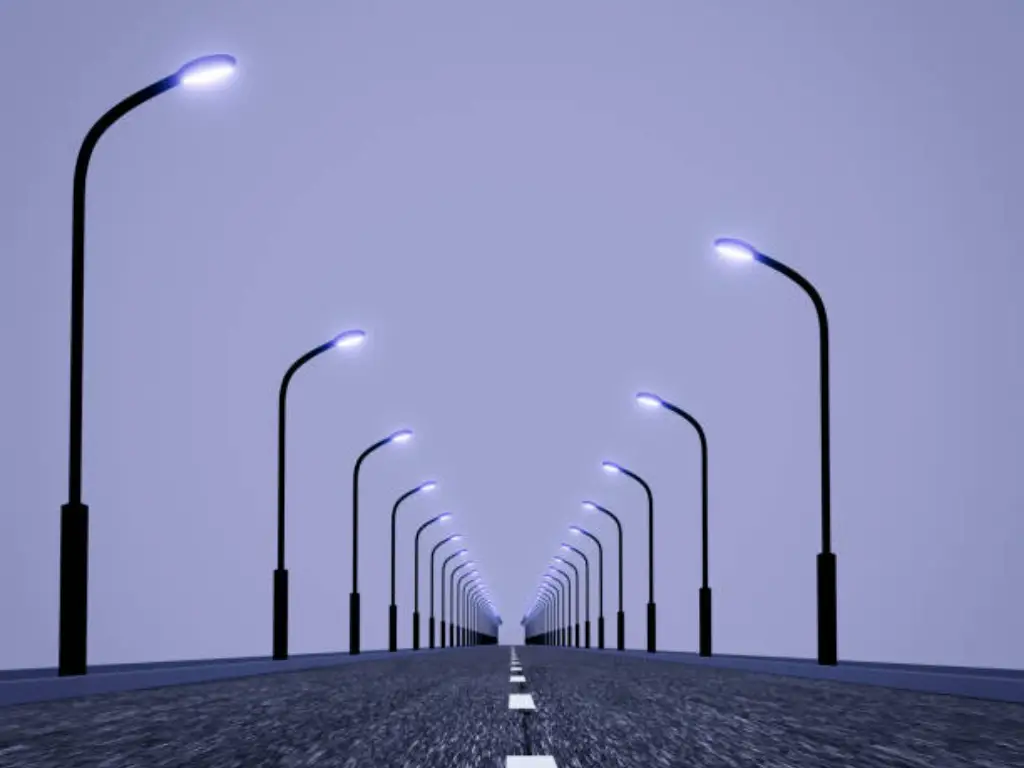
Assessing Street Lighting Requirements
If a design of street lighting is a one-size-fits-all, it is sure to fail. Each project is different in requirements depending on the environment in which it is used, as well as the people it serves. An effective assessment involves a very good assessment.
Evaluating Road Types and Traffic Patterns
The lighting requirements of a busy high-speed arterial road could hardly be more different from those of a quiet residential cul-de-sac.
- High-Traffic Arterial Roads: Should have higher illumination (e.g., 20-30 Lux) and exceptional uniformity so that the drivers could view obstructions and understand signs at a distance. Alertness enhancement may be done through cool white light (4000K + ).
- Collector Roads: These are local roads that are connected to arterials and include moderate traffic. They need moderate light conditions (e.g., 10-15 Lux).
- Local residential streets: Characterized by low traffic speed and volume. Sufficiently low illumination (e.g., 5-10 Lux) and warmer colors (e.g., 3000K) would help obtain a comfortable, safe atmosphere, which would not be intrusive.
Identifying Pedestrian and Vehicle Needs
Your design should allow every user. In the case of a vehicle-centric roadway, it is to avoid a collision. In the case of pedestrian regions such as streets, crossing areas, and open squares, attention is paid differently. The lighting should be able to remove or minimize shadows where the threat may exist, it should have good color rendering to recognize people by their face, and it needs to have perceived safety to promote community activity at night.
Addressing Energy Efficiency and Sustainability
The development projects in the modern world are being evaluated based more on their environmental standing. A well-designed street light is an effective method of showing commitment towards sustainability, with the added benefit of being cost-effective and ecologically friendly.
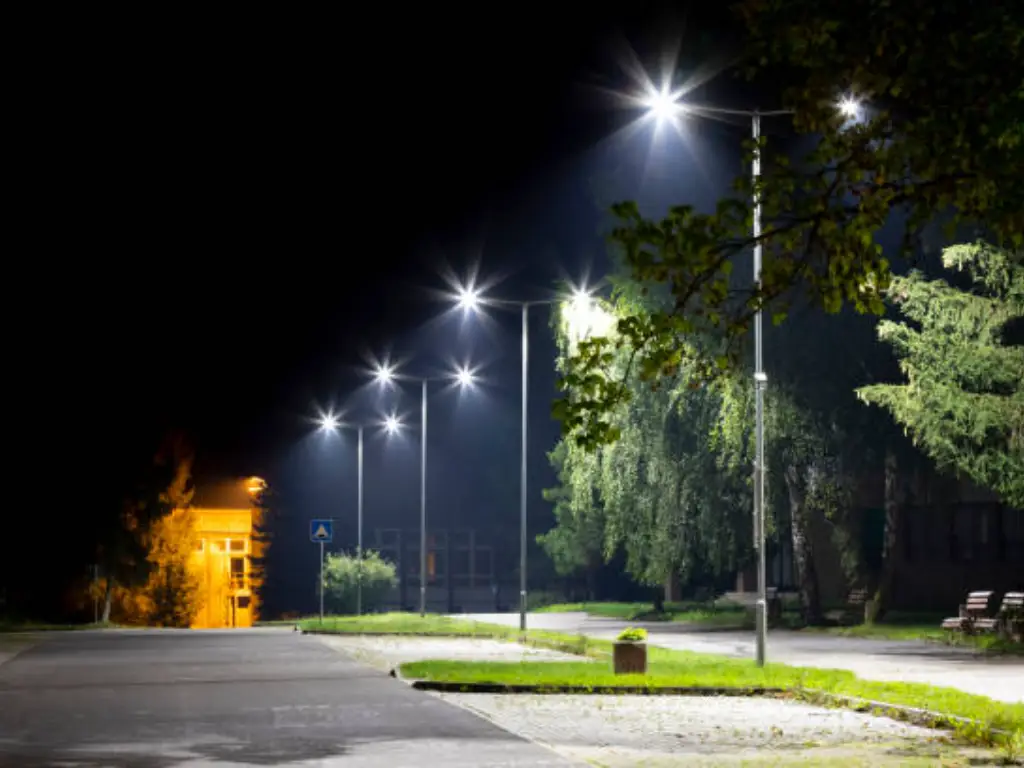
In addition to the intrinsic efficiency of the LED, two major spheres are leading the future of sustainable lighting:
- Combining Smart Controls and Sensors: This becomes the next Echelon of efficiency. With the installation of motion and light sensors on luminaires, it is also possible to automatically regulate the brightness depending on the time of day. By way of example, the lights may only draw 30 percent on a street with no activity, and as a pedestrian or car is spotted, they will immediately rise to 100 percent. The remote management systems will enable the operators to oversee their performances, identify faults, and operate the entire network through a centralized dashboard, and this will reduce by another 30-50 percent the energy consumption costs and operating costs.
- Low-Energy and Solar-Based Lighting Systems: In off-grid sites, remote corridors, or places with flexible energy demands (such as in an effort to achieve net-zero energy), street lights powered by solar may prove to be a feasible and steadfast solution. The general improvement in battery life and the efficiency of photovoltaics has made them a feasible solution that removes the expenses of trenching and continuous electricity expenses.
Budgeting Your Project: A Look at Initial vs. Lifetime Costs
To developers, the bottom line is important. One is tempted to ignore initial expenses through the purchase of low-quality fixtures. Nevertheless, this is a myopic approach to lighting the street. The Total Cost of Ownership (TCO) of a lighting system is the actual cost of a lighting system during its lifetime.
And this is how it breaks down:
- Initial Cost (CAPEX): This is the first-time cost to include the cost of luminaires, poles, and the cost of installation. Although the initial cost of construction of the LED fixtures might be higher than that of traditional LED fixtures, this difference has minimized considerably.
- Lifetime Cost (OPEX): This is where the real savings are. It includes:
- Energy Consumption: As was mentioned, the LEDs can save up to 75% of the energy cost.
- Maintenance: LEDs, having a 5-10 fold greater lifespan than conventional lamps, significantly minimise the investment into maintenance crews and maintenance parts, which can be costly, but also disruptive.
- Re-lamping: The frequent replacement cycle of HPS/MH lamps is completely eliminated.
A high-quality LED system will always be more cost-effective when you consider long-term operational savings in 10-15 years.
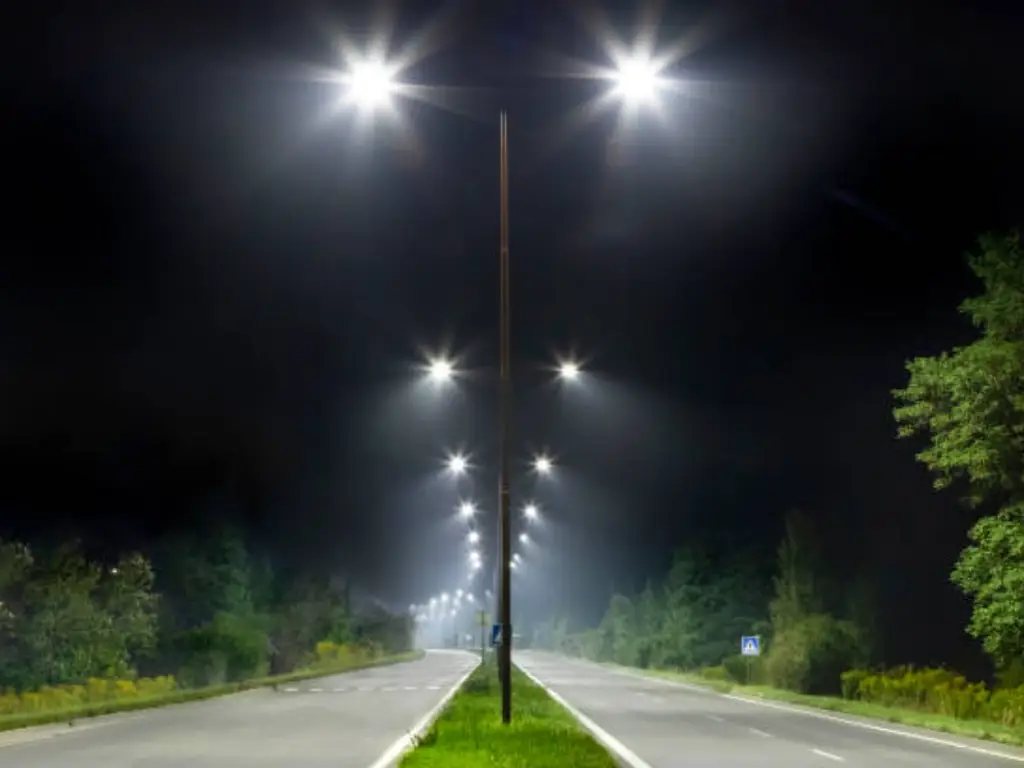
Choosing the Right Partner: How WOSEN Elevates Your Street Light Design
A perfect street light design cannot be implemented by using a partner whose expertise does not match the quality of their products. WOSEN is not a supplier but a strategic manufacturing partner that is committed to adding value to your project and brand name. Our mission is to provide actual outcomes and accomplishments on three main pillars:
- Planning DIALux Simulation: We exclude doubt on when you are planning. Submit your project plans to us, and our professionals will produce a professional DIALux simulation. You can define the specific beam angle (ranging between a narrow 15 and a wide 120) to place light exactly in the place it is needed, you can select the optimal color temperature and the necessary level of CRI to achieve this balance between efficiency and complete color accuracy. This degree of technical control means that all the measurements of each particular application in your project will be performed in the right way.
- ROI Engineered Technology: Our LED street lights are designed to perform and have a long service life, delivering excellent lumen output. Having a 50,000-hour lifespan, they cut down maintenance expenses drastically. Our products are supported by some of the most important certifications, such as CE, RoHS, SAA, and ISO9001. Our smart solutions include the fits of motion sensors, and IP67 durable enclosures to make sure that your investment is able to serve for many years, with an opportunity to make a high-level profit.
- Customization Unsurpassable: We made lighting an identifier of yours. WOSEN also provides custom-designed molds, logo printed into the fixture, custom colors, and packaging. Such a degree of customization strengthens your position on the market and transforms a utility into a unique branding element.
Safety and Compliance: Navigating Regulations and Standards
Regulations on safety and lighting are not discussed. Failure to comply may result in delays to their projects, retrofits at great expense, and substantial liabilities. Some major standards anyone has to know about are the ones of the Illuminating Engineering Society (IES) and the local municipal codes.
These standards set a minimum lighting requirement for different types of roads, a maximum amount of glare to avoid causing any inconvenience to the user, especially the driver of these highways, and the engineering provisions of the poles vary according to the type of road in use. Moreover, due to the increasing number of people who realize the influence on the environment, the rules concerning light pollution and the adherence to standards of light pollution immersion known as Dark Sky are on the rise. A partner who understands this fairly confusing terrain can guide you through it all and help you adhere to all the requirements of your street light design.
Conclusion
Designing street lights cuts much deeper than just a technical assignment; it is an investment in the future of your development. With a focus on high-quality LED technology, thoughtful choice of the street light fixtures, following reasonable design principles, and evaluating the design requirements of your specific project, one can reach a state where the environment is safe, efficient, and aesthetic.
The most important lesson for developers to take in is that one should think beyond the original price and think of the value in the long run. A properly designed system will be able to realize its returns very significantly in terms of energy savings, lower maintenance costs, and in property value.
It is important to select the partner. You do not just need a manufacturer that grinds out high-quality, certified products, but one that has the design knowledge and customization skills to take your particular vision out of the dark and into the light!
Feel like gaining confidence to initiate your project? To get the best out of your development and have it looking bright in the future, WOSEN will conduct a free consultation and DIALux simulation; contact the experts today.
